Weeks of 1/24 and 1/1 (Jam Postmortem)
- Drew Abegg
- Feb 7, 2022
- 6 min read
WOOOOOO game jam. That's what I said a couple weeks ago. I'm pretty burnt out now to be honest, but this was by far the most successful jam I've been a part of! Both the success and the burnout can mostly be attributed to the fact that the jam was two weeks long. This also meant that all four teams - AM and PM sessions - had submitted a playable game in time. That's remarkable. The game jam page is available here, and my team's game is here.

We began, as always, with the prompt. Here, it was "excavate". This word conjures images of dirt, dirt, and more dirt. I wanted to try to steer the group brainstorming session away from ideas that involve tunneling through dirt, because I didn't want to be looking at a screenful of dirt for two weeks. I expressed my desire to make simple and tightly designed visuals. We started thinking about archeological excavation, and how that could lend itself to some unique subject matter. Sci-fi elements started to be blended in (as they are wont to do), and we came up with the idea of a crashed/abandoned spacecraft as a setting.
We bounced around a bunch of gameplay ideas, from a co-op arena hoard shooter to a PvP collectathon race. I'm curious to see how these ideas might've turned out, especially because they were conceived to take place in a very limited playspace, which would've allowed for much more polish in the environment. Ultimately, however, we ended up with a narrative-heavy platformer. That's pretty cool too.
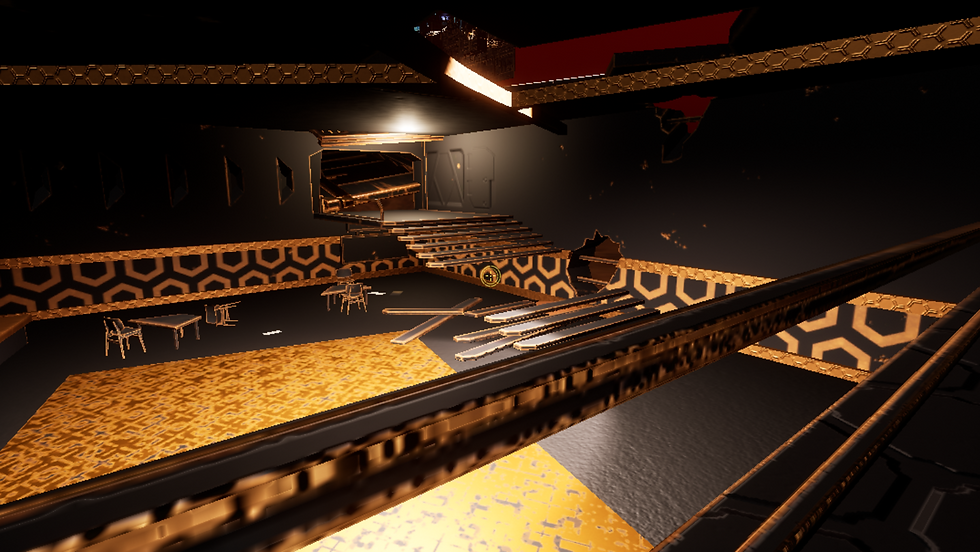
The team dynamics were unusual this time around. Ultimately, everything was amicable and functional, but unconventional. The biggest issue was how we picked leads. In the case of the team lead and art lead, everyone who seemed fit for the role already had their work cut out for them and, we guessed, wouldn't have time for leadership things.
The role of team lead was (sort of reluctantly) taken by Conlen. He was initially intrigued by the prospect of making a cool, polished environment, but after about a day and a half he realized that he wanted to be doing VFX work, not asset production and certainly not team management. So he resigned and the role was transferred to Belle, who didn't really feel like she knew the game's direction very well. But we knew she was a strong leader, and we didn't have an alternative. I would've been happy to take the role, but I was set to be the primary 3D artist for a 3D game which was rapidly widening in scope. I ain't got no time. And I think we made the right choice anyway.
The role of art lead was given to Kara, who was also set to be the lighting artist. In the case of both the art lead and the team lead, neither really had a strong direction in mind, nor did they claim to. With any other team, this could've been a big problem. But, in a way I haven't seen in any previous teams, our individual drives and directions were strong, but rarely conflicted. (Almost) no one waited for instruction on what to work on, we just got going. We had strong and constant communication throughout the team, so, with few exceptions, we were on the same page as we moved forward.
The more I write about it, the more I realize how good the dynamic of our team was despite the lack of structure. The programmers were highly productive and very good at working with the rest of the team. We didn't even bother assigning a programming lead, as they work well as a duo. Design was on point too. Max was design lead, and he has people skills like nobody's business. Belle was story lead, and she can bang out a story also like nobody's business. There is literally no business going down here. Audio tends to be an afterthought, but not this time. We had one person devoted to SFX and another to soundtrack, so we were covered in that department.
In the future, I think a more conventional team hierarchy would be beneficial or at least a good safety net. But as it stands, this team worked and they worked hard. Given the time frame, our collective work is more than I could've asked for.
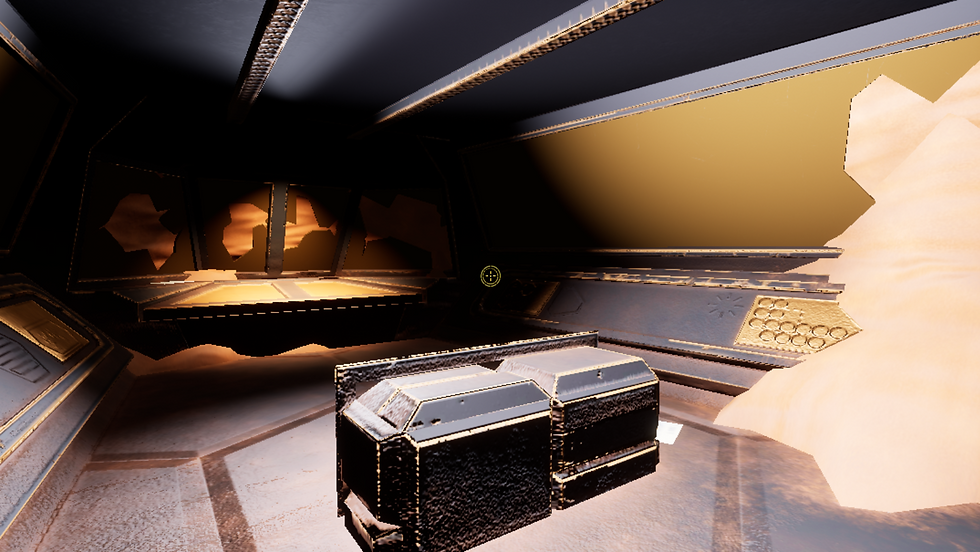
Now for my part: after the initial brainstorm and planning session, we broke out into an art meeting. I proposed the ship's look (hence my vis dev credit). The majority of assets would be uniform: made of a copper/gold metal painted black and worn down by sand. Once I got some hearty nods, I went straight to my computer and whipped up a proto-asset. Thinking back, I'm impressed at the fact I was able to translate 1:1 my idea into a game-ready asset in mere minutes. Not only that, but that asset was able to communicate and establish the look of the whole game. This program is dope.
For the first time in my game jam experience, everything is individually PBR textured. That should be impractical, but we took a little shortcut with our pipeline. When I textured the first asset in Painter, I did it in a way that would allow me to export it as a smart material that I could hand off to the other 3D artist, Elias. We could both simply drag and drop the material onto any asset and baddabing, it looks neat! It was easily tweakable so specific details could be made if the artist desired.
The other trick to our efficiency is the abstraction of our setting. 75% of the game is just sci-fi greebles, so meshes could be made fast and loose and they'd fit in just fine. Assets could also be multipurpose. A ton of objects (internally called "doodads") could function as floating platforms, walls, or ceilings; and placed at the level designer's discretion. This abstraction also allowed me to experiment with different patterns and feels per asset. I think that came through nicely in the end. Everyone has a favorite doodad. What's yours? Post it in the comments below.
There were a collection of objects that had a specific purpose, namely, props and preassembled rooms. Those tended to be a bit slower in production, especially the rooms. I made four full rooms (wow fr??), to varying success. My favorite is probably the cargo bay. It was the only preassembled room that I had full control over - it had no premade concept art, no storytelling needs, nor gameplay needs. So I tried to make the whole container storage and moving system visually striking and unique. The storage wall towers above you, and leans forward as if it were falling on top of you. The crane structure accentuates the pitch of the wall, and adds perspective lines to accentuate the size. Additionally, this structure carries your eye up and over the wall, which is where the player is headed. I also think that this storage system (the wall, crane, claws, and containers) are believable and I think that a player would be able to imagine it in use.

Real quick, I'll address the texel density issues. They're kind of everywhere if you're looking for them. The way levels were built, our level designers were able to use the doodads however they wanted, which often meant scaling them beyond what is ideal. It's my bad that i didn't communicate the limits of the assets better. In the case off the pre-assembled rooms, the texel density is entirely my fault. I know of Udim workflows, but I've never used them. I didn't feel that I had the time to learn them, but in retrospect I really should've. I don't think they're all that complex.
I also served as buildmaster for the team, so I handled all the packaging and zipping and downloads, which is a headache and a half, especially when we've packaged about a dozen different updates and Windows, Mac, and Linux versions. Not much to say on that, just a responsibility that I had.
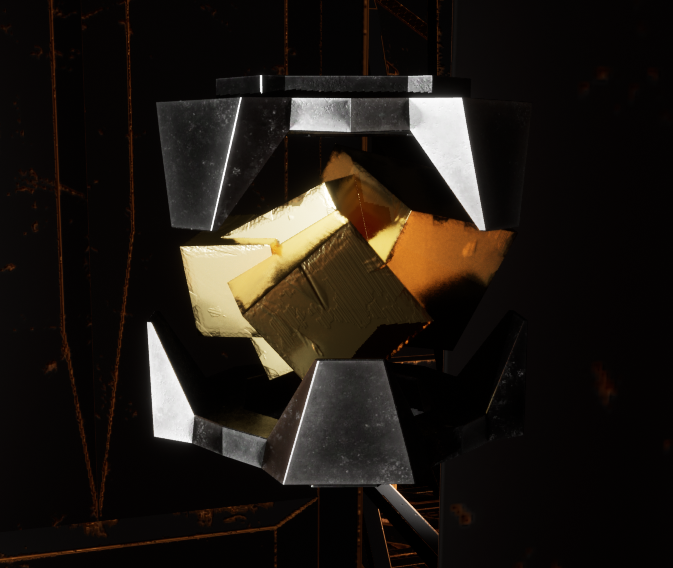
Now that we're post-launch, we're getting a bunch of feedback. It's largely positive! People seem to like it, and we achieved our stated goal of creating an atmospheric platformer with a story. Yay!
People are finding an abundance of glitches. Bobby is a masochist though, so he's fixed 90% of them that same day. We want to put out a fixed version, but we aren't allowed to until Friday, after judging is over.
The glitches aren't all bad though, because they've been conducive to creating a small speedrunning scene. That's so fun! A normal playthrough might take a player 30 min, assuming they engage with the story. It hasn't even been 24hrs since launch, and we've optimized the time all the way down to 1 minute 38 seconds.
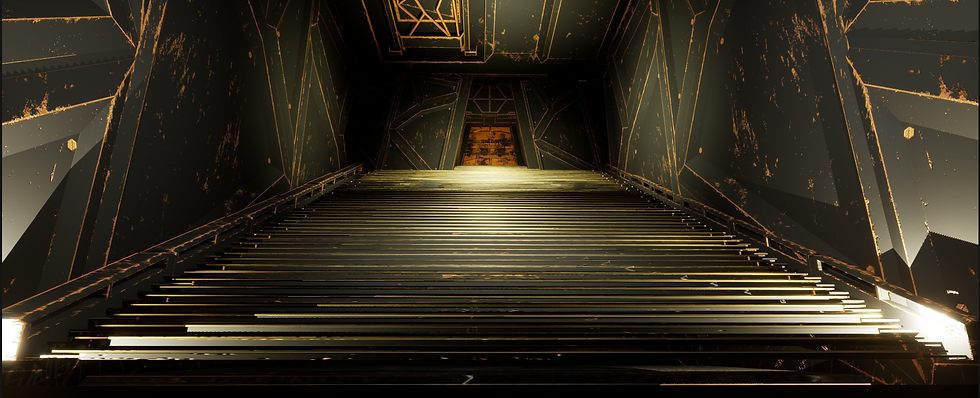
To sum up what I've learned: I haven't really gained any new skills here, but I have refined the whole hard surface pipeline even further. I've also been able to exercise artistic direction skills, as well as teamwork skills. I'm really proud of what we were able to create!






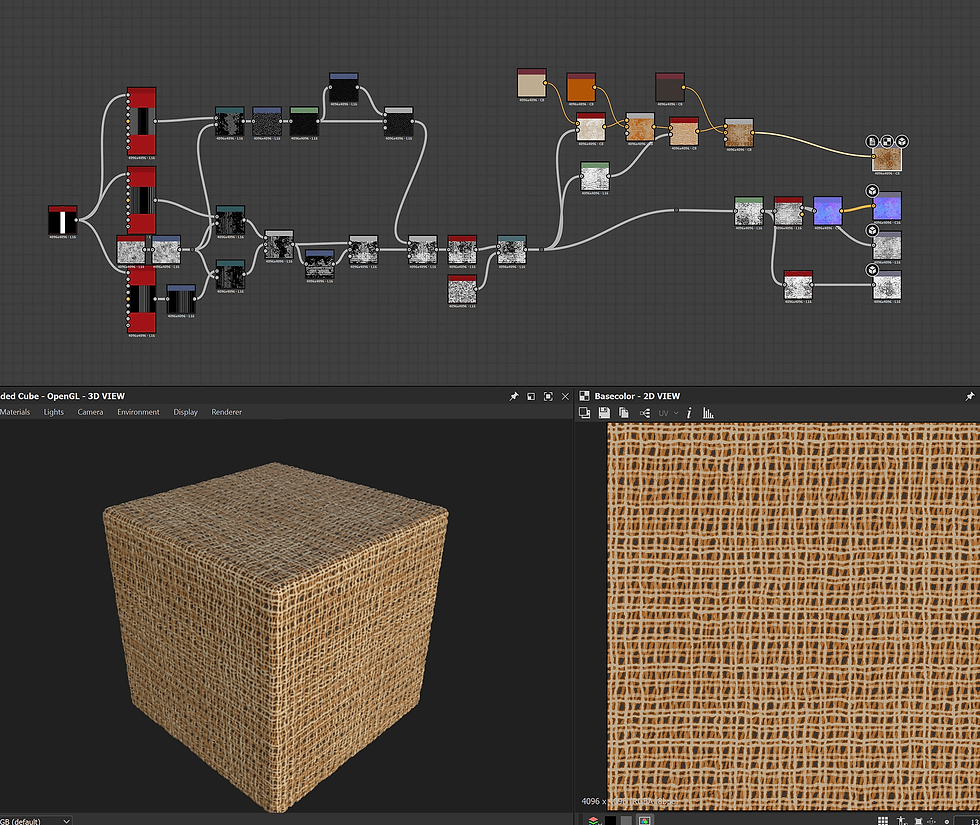

Comments